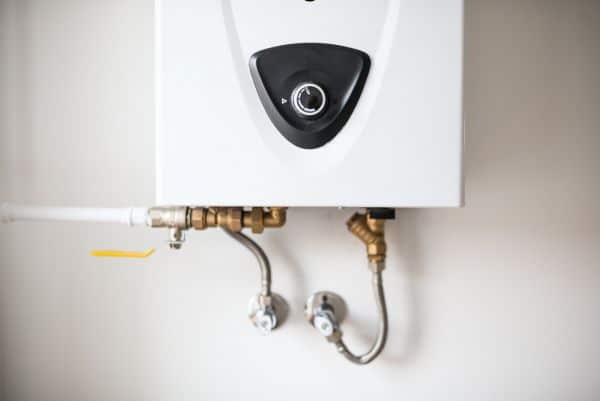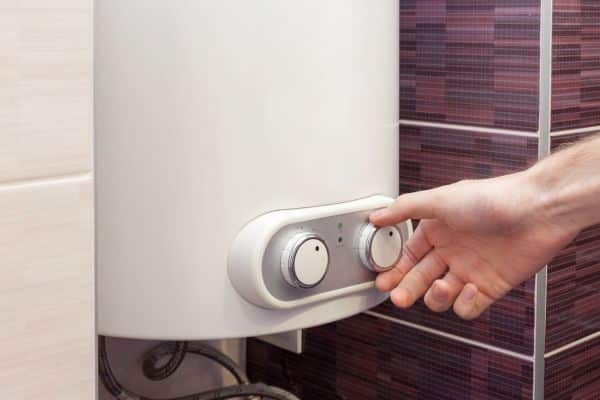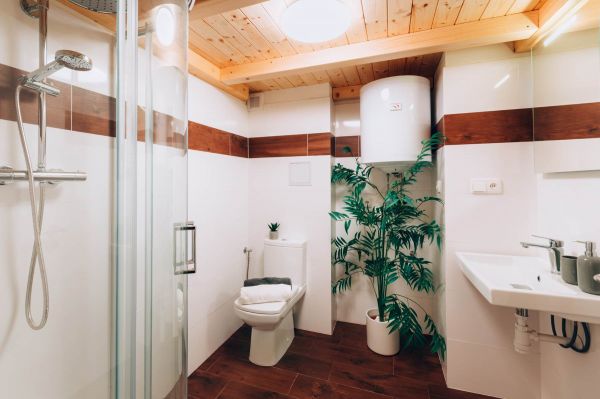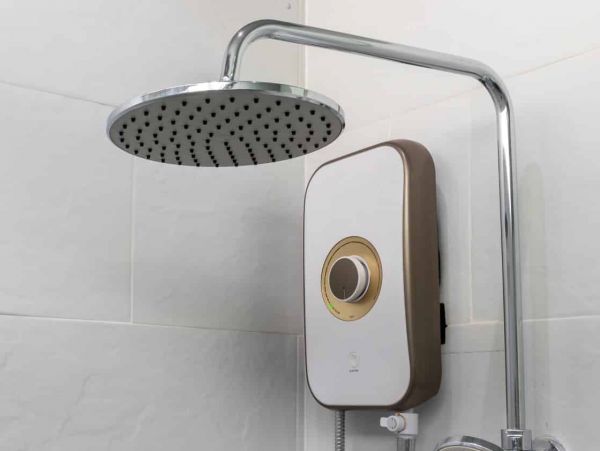Boiler or instantaneous water heater: Which is worthwhile when?
Although instantaneous water heaters are more energy-efficient, boilers usually reach higher temperatures and provide hot water immediately. Which system is chosen usually depends on the structural conditions on site and the usage behavior. We explain how both technologies work, what costs are associated with them and when what is worthwhile.
Instantaneous water heaters or boilers: How the systems work
Both boilers and instantaneous water heaters are devices that provide hot water. They are out of the question for heating, instead the water is used for washing hands, washing dishes, showering or bathing.
- Tankless water heaters heat the water only when it is needed. Water flowing through it is heated by a heating coil (electricity) or by burner (gas).
- Boilers heat the water by cartridge heater (electricity) and store it in an insulated container. Hot water is immediately available if needed.
How does the instantaneous water heater work?
Tankless water heaters with lower power levels can often be connected to a household socket with 230 volts. With an output of 2 to 3.5 kilowatts, they only reach lukewarm temperatures of 35 degrees Celsius, but it is usually enough for washing hands. Due to their design, the flow rate of many smaller devices is also very limited. And it takes a while for the device to start up and reach its maximum temperature.
Larger appliances with more power (approx. 10 kW to 21 kW) can reach temperatures of 45 to 60 degrees Celsius, so that shower or bath water, for example, can also be heated. They often have to be connected directly to the mains (400 V). A distinction is made between two types:
- In the case of devices with hydraulic control, the amount of water is usually only sufficient to supply a tap. If a second tap is opened, the pressure drops and instead of warm shower water, there is a gush of cold water!
- Electronically controlled instantaneous water heaters reliably supply hot water, without unpleasant surprises. Although they are somewhat more expensive, they work more efficiently and save around 30 percent electricity compared to hydraulic devices.

Instantaneous water heaters with higher output can be operated with electricity or (as shown) with gas.
How does the boiler work?
Boilers or hot water tanks, on the other hand, reach up to 85 degrees Celsius. Temperatures above 60 degrees Celsius are important to prevent the formation of legionella in stagnant water. Under-sink boilers are also connected to a socket and can be conveniently placed under the sink or sink. Larger hot water tanks are often directly connected to the home power grid. They are usually located in the bathroom or utility room and can supply several taps with hot water at once.

The temperature of boilers should be at least 60 degrees Celsius, so legionella doesn't stand a chance.
Boilers and instantaneous water heaters in cost comparison
In terms of acquisition costs, instantaneous water heaters are clearly ahead. Smaller devices for hand basins or for supplying the sink are already available for less than 100 euros. These can also be installed yourself. Larger instantaneous water heaters for showers and bathtubs usually cost between 400 and 1,200 euros. This applies to gas as well as electricity-powered appliances. In addition, however, there are the costs for installation by a specialist company.
The prices for hot water boilers can also be staggered according to the size of the devices:
- Under-sink boilers with a capacity of 5 liters cost approximately between 70 and 150 euros. If not available, a low-pressure valve must be retrofitted to provide pressure equalization when the water is heated up (approx. 30 to 160 euros).
- Boilers with 80 to 120 liters (sufficient for two people) cost about 500 to 1,200 euros. These devices are then pressure-resistant, a special fitting is not required. This will incur costs for installation.
- Boilers with 160 to 300 liters, suitable for families of four and large households, cost about 1,400 to 2,000 euros. Here, too, installation costs are added.

Boilers that have enough water for showering or bathing are usually located directly in the bathroom.
Electric instantaneous water heaters prove to be power guzzlers
However, the running costs are more important than the pure purchase price. And these can be quite high, especially with electricity-powered instantaneous water heaters. 10 minutes of showering cost between 0.80 and 1.20 euros, depending on the performance of the built-in device. If you shower every day, you will then have to reckon with 24 to 36 euros per person in electricity costs per month. But you can also save electricity with instantaneous water heaters.

Dieser Durchlauferhitzer versorgt ausschließlich die Dusche.
Beim Boiler richten sich die Stromkosten nach der Leistung des Geräts, dem Volumen des Speichers sowie der Temperatur, auf der das Warmwasser gehalten werden soll. Bei einem Vier-Personen-Haushalt mit einem Verbrauch von 160 Litern Warmwasser am Tag liegen die monatlichen Kosten bei rund 20 Euro pro Person, wobei neben dem Duschen auch das gesamte übrige Warmwasser in die Rechnung miteinfließt.
the electricity costs are based on the output of the device, the volume of the storage tank and the temperature at which the hot water is to be maintained. For a four-person household with a consumption of 160 litres of hot water per day, the monthly costs are around 20 euros per person, with all other hot water included in the bill in addition to showering.
Very practical
Modern boilers and instantaneous water heaters are "solar-capable". This means that they can often be coupled with a solar thermal system so that the water is heated in an environmentally friendly and cost-effective way.
Boilers or instantaneous water heaters: It depends on the areas of application
The question of whether an instantaneous water heater or boiler is better cannot be answered in a general way. Instantaneous water heaters are useful if you rarely need hot water or if it is not possible to connect to a larger (heating) system, for example in garden and weekend houses or in rarely used sanitary rooms, e.g. in the basement or in outbuildings. For remote holiday homes, the combination with a PV off-grid system is conceivable. In areas where larger quantities of hot water are required, a (central) boiler is usually the better choice compared to the use of several instantaneous water heaters.
Here you will find many tips on how to save electricity and water in the bathroom.
Join the conversation